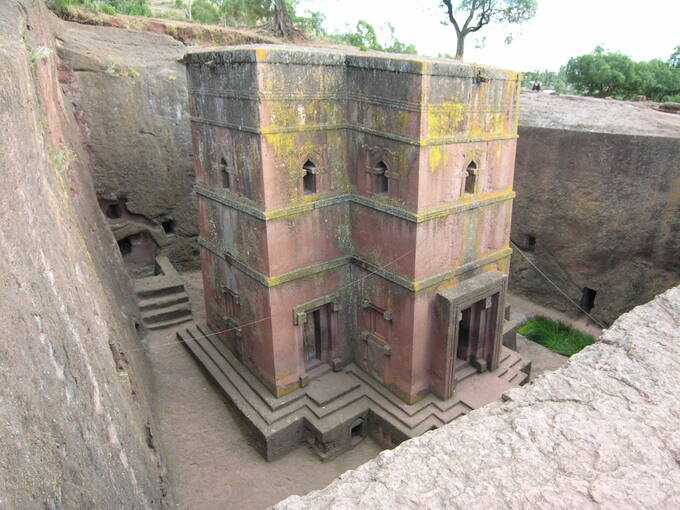Following the decline of the Aksumite Empire, power shifted in the twelfth and thirteenth centuries to Roha in Lasta District.
This was renamed for King Lalibela (1181-1221) of the Zagwe Dynasty which ruled in Lalibela for more than a century. The construction of eleven rock-hewn churches is attributed to King Lalibela. The buildings are monolithic, carved from a sloping mass of red volcanic scoria underlaid by dark grey basalt and interconnected by a maze of tunnels and passages with openings to hermit caves and catacombs. Some are of the basilica type, having archaic features and imitating architectural elements from earlier periods, yet they differ in design and style. Two are decorated with interesting wall paintings and carved figures. The Lalibela churches are included in the World Heritage List; the principal edifices are the Churches of Medhane Alem, Maryam, Ammanuel, Giyorgis and Golgota-Mikaïl.
Plan of action
Erosion due mainly to weathering is damaging the stone surfaces of all the churches, so that restoration is a matter of urgency. Religious objects too, such as a cross, manuscripts and a wooden altar, must at all costs be preserved.
UNESCO and the European Community have organized an international competition to built temporary shelters to protect the monuments from the rains. As soon as it is technically possible, the sites will be restored.

